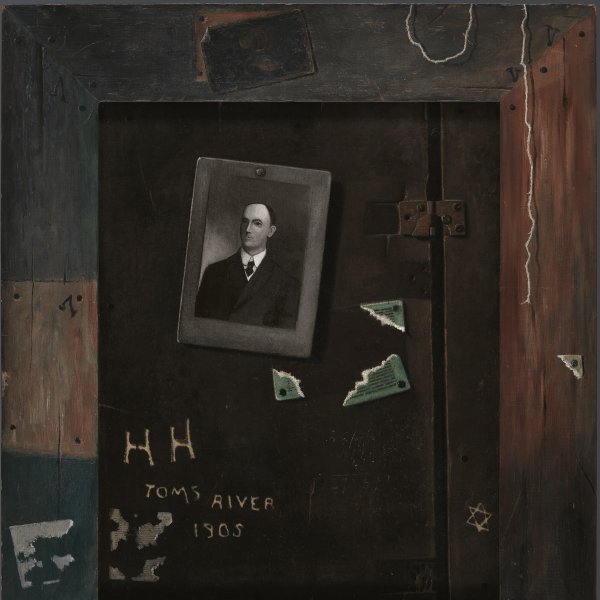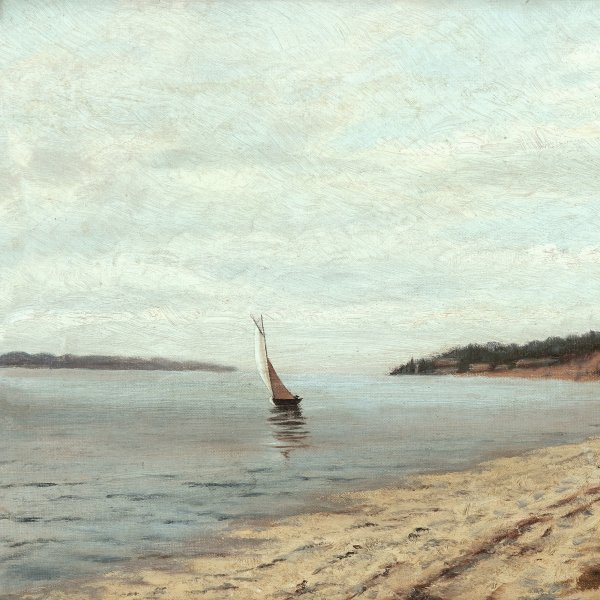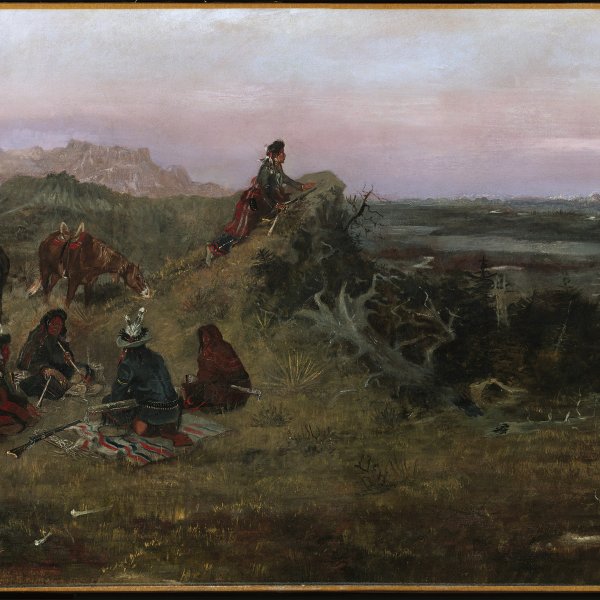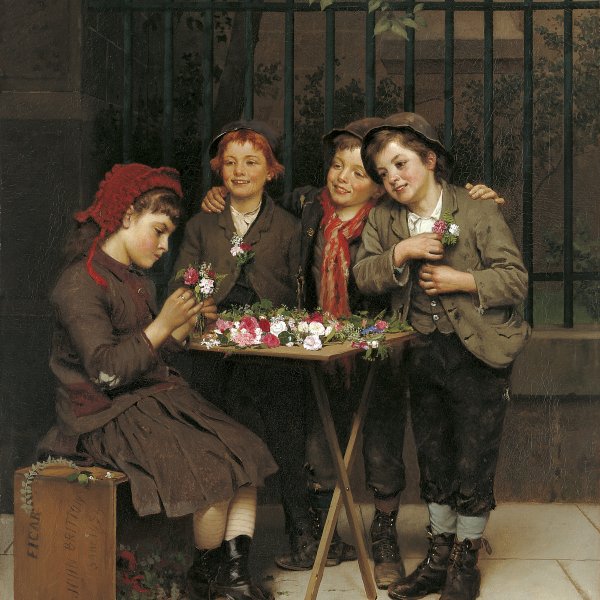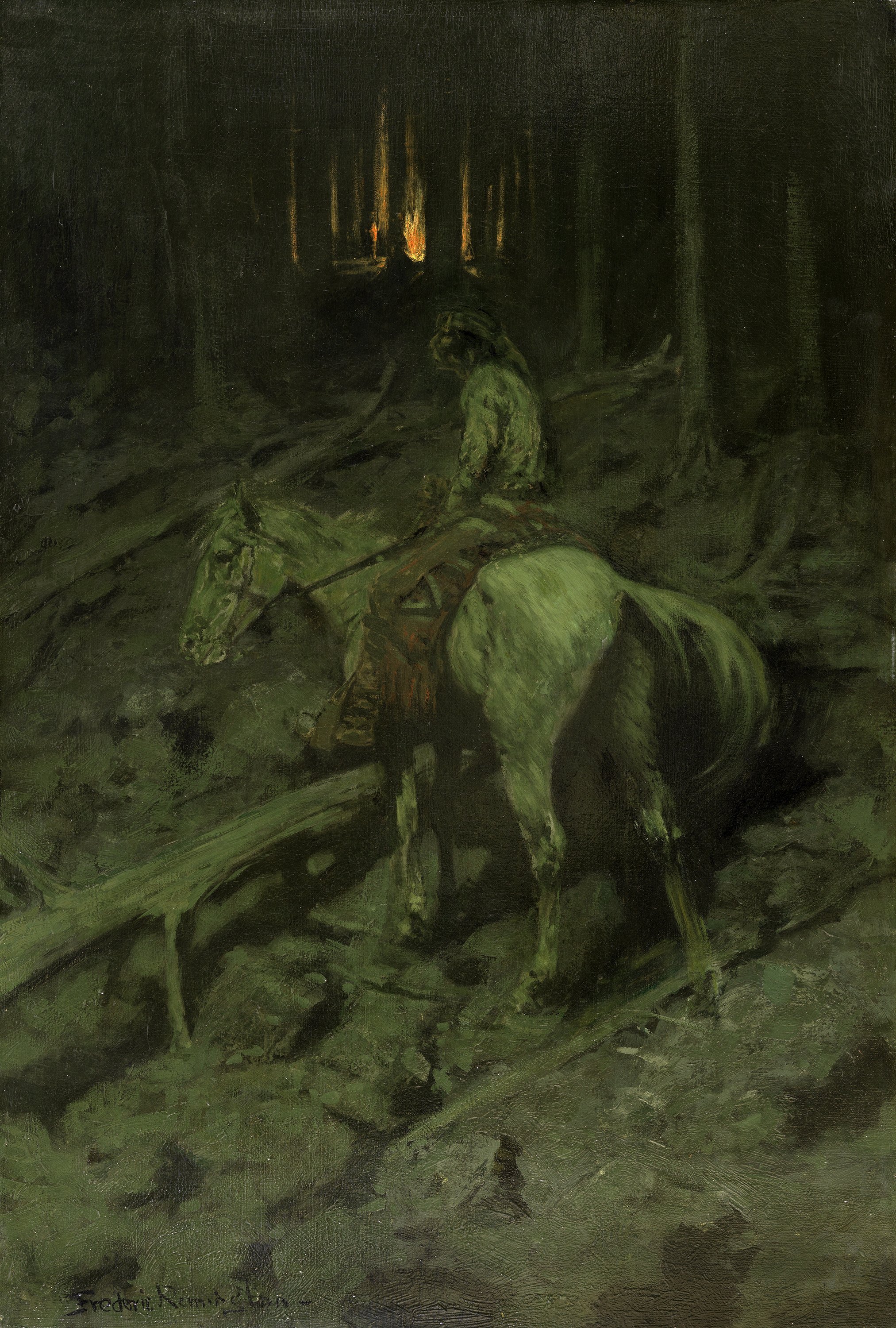Apache Fire Signal
ca. 1904
Oil on canvas.
102 x 68.5 cm
Museo Nacional Thyssen-Bornemisza, Madrid
Inv. no.
722
(1981.57
)
Room 30
Level 1
Permanent Collection
The numerous scenes set in the Far West that Frederic Remington painted from 1900 until his death in 1909 reveal his fascination with firelight. Apache Fire Signal is a good example of these late nocturnal landscapes, which are considered the crowning achievements of his career. These scenes include The Grass Fire, Apache Medicine Song, and The Hunters’ Supper, which were shown in his exhibition at the Knoedler Galleries in New York in December 1909.
The painting in the Thyssen-Bornemisza collection, in which the relationship between moonlight and firelight is impeccably handled, depicts a solitary Indian on a rocky hillside surrounded by unsettling shadows. The palette, restricted to several shades of greyish-green and brown illuminated solely by gleaming touches of orange, helps create the air of mystery exuded by the entire composition.
Remington had often visited the San Carlos Reservation (Arizona) between 1880 and 1890 to paint the Indians confined there, and depicts Apaches again in this work, although here the Indian and his horse resemble spectral forms from the artist’s imagination and memory.
Paloma Alarcó
The painting in the Thyssen-Bornemisza collection, in which the relationship between moonlight and firelight is impeccably handled, depicts a solitary Indian on a rocky hillside surrounded by unsettling shadows. The palette, restricted to several shades of greyish-green and brown illuminated solely by gleaming touches of orange, helps create the air of mystery exuded by the entire composition.
Remington had often visited the San Carlos Reservation (Arizona) between 1880 and 1890 to paint the Indians confined there, and depicts Apaches again in this work, although here the Indian and his horse resemble spectral forms from the artist’s imagination and memory.
Paloma Alarcó




